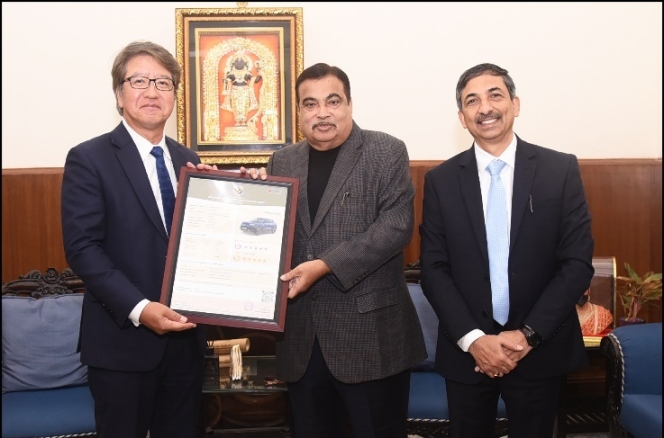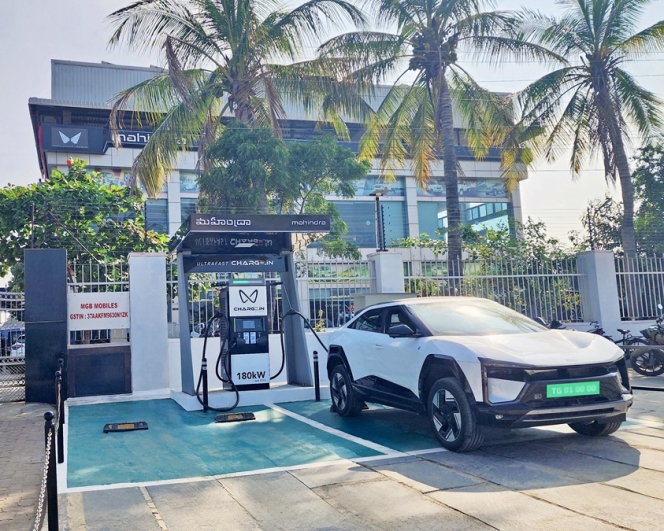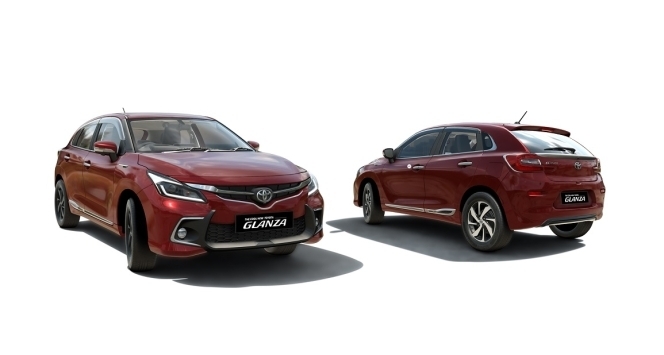YoY PV Exports Surge In July Despite Domestic Sales Dip
- By Gaurav Nandi
- August 18, 2024

Data released by the Society of Indian Automobile Manufacturers (SIAM) show a modest uptick in Year-over-Year (YoY) exports in the passenger vehicle (PV) segment despite a slight slump in domestic sales volumes.
The category representing passenger vehicles, utility vehicles and vans cumulatively recorded 61,929 units being exported in July 2024 compared to 59,594 units in July 2023. Domestic sales volume, however, stood at 2,96,785 units in 2024 compared to 3,02,727 units a year earlier.
Nonetheless, the production volumes within the PV segment witnessed a YoY uptick with 3,97,854 units manufactured in July 2024 compared to 3,93,094 units a year ago.
Maruti Suzuki India clinched top place for exports in utility vehicles and van while Hyundai Motor India was the frontrunner in the passenger car segment in July 2024.
Hyundai Motor India exported 12, 297 units (passenger cars) while Maruti Suzuki India shipped off 13,694 units (utility vehicles) and 651 units (vans), respectively. The latter also cliched the second place in passenger car exports with 9,551 units.
This trend saw a flip in domestic sales with Maruti Suzuki clinching top spot. It sold 69,245 units (passenger car) during July 2024 compared to 16,037 units of Hyundai Motor India. In the utility vehicle and van category Maruti Suzuki sold 56,302 and 11,916 units compared to 16,037 units of Hyundai Motor India.
India’s three-wheeler market showcased mixed growth in July 2024, as highlighted by SIAM’s latest report. Overall production rose to 90,505 units, marking a 6.1 percent increase compared to July 2023. Bajaj Auto Ltd. led the segment, with production growing by 18 percent to 56,085 units, driven by robust domestic sales of 37,852 units and steady exports.
Mahindra & Mahindra Ltd. saw a notable shift in its passenger carrier segment, with a production decline to 1,384 units in July 2024 from 3,275 units a year earlier. However, the company’s e-rickshaw segment gained momentum, producing 1,606 units, a 19 percent dip from 2023, but still showing resilience.
In goods carriers, production across manufacturers slightly dipped to 8,721 units, down from 9,654 in July 2023, despite Bajaj Auto’s growth in this subsegment.
The two-wheeler industry displayed robust growth in July 2024. The sector’s production soared by 21 percent YoY, reaching 19,48,223 units, compared to 16,08,414 units in July 2023. This growth was led by the scooter segment, which surged 41.2 percent to 6,54,748 units. Honda Motorcycle & Scooter India and TVS Motor Company were the primary drivers, reflecting strong demand across urban and semi-urban markets.
The motorcycle segment also recorded healthy growth, with production increasing by 12.8 percent to 12,49,903 units. Bajaj Auto Ltd and Hero MotoCorp Ltd maintained their leadership positions, contributing significantly to this expansion. TVS Motor Company Ltd further solidified its presence, with gains across scooters, motorcycles, and mopeds. Notably, mopeds saw a 19 percent rise in production to 43,572 units, highlighting their continued relevance in certain markets.
Domestic sales remained strong, with the two-wheeler market clocking 14,41,694 units, up from 12,82,054 units in July 2023. Scooters and motorcycles were the top performers, with domestic sales of 5,53,642 units and 8,50,489 units, respectively.
On the export front, the sector experienced a 7.8 percent rise, reaching 3,24,908 units. Yamaha Motor India and TVS Motor Company led this growth, showcasing the increasing global appeal of Indian two-wheelers.
Overall, the two-wheeler industry continues to thrive, driven by strong domestic demand and a solid export performance, reinforcing its critical role in India’s automotive landscape.
Commenting on July-2024 performance, SIAM Director General Rajesh Menon said, “In July 2024, passenger vehicle segment de-grew by (-)2.5 percent compared to July 2023, posting a sales of about 3.42 lakh units. Three-wheelers posted a growth of 5.1 percent compared to July last year, with sales of 0.59 Lakh units in July 2024, which is close to the peak of 2018-19. Two-wheeler segment also posted a decent growth of 12.5 percent in July 2024 as compared to July 2023, with sales of 14.42 Lakh units”.
Commenting on sales data of July 2024, SIAM President Vinod Aggarwal said, “Though three-wheeler and two-wheeler segments are performing well, there has been some de-growth of passenger vehicles and commercial vehicles in July 2024, compared to July 2023. The above average rainfall coupled with upcoming festive season is likely to again propel growth in the short term. In addition, enabling budget announcements which emphasises on overall economic growth with fiscal support for infrastructure and rural sector should augur well for the automobile sector in the medium term.”
Photo: Prateek Karandikar (Wikimedia Commons)
Maruti Suzuki e Vitara Gets 5-Star Bharat NCAP Safety Rating
- By MT Bureau
- December 02, 2025

Maruti Suzuki India has been awarded a 5-star Bharat NCAP safety rating for its e Vitara, marking a moment for the company's electric vehicle strategy.
The e Vitara is built on Suzuki’s Heartect-e platform designed for electric vehicles to deliver strength, structural rigidity and advanced high voltage protection. The ‘Made-in-India, Made-for-the-World’ e Vitara is designed and tested for temperature conditions across the world, ensuring performance from as high as 60deg Celsius to as low as -30deg Celsius. The model is offered with 49 kWh and 61 kWh battery options.
Nitin Gadkari, Minister of Road Transport and Highways of India, said, “Congratulations to Maruti Suzuki for achieving 5-star Bharat NCAP in both adult and child occupant protection for their e Vitara. I am especially glad that Maruti Suzuki has shown real leadership in providing 7 airbags as a standard across all variants of the e Vitara.”
Hisashi Takeuchi, Managing Director & CEO, Maruti Suzuki India, said, “The 5-star Bharat NCAP rating for e Vitara, our first Battery Electric Vehicle, is a moment of immense pride for all of us at Maruti Suzuki. Using the Bharat NCAP 5-star rating, we will export the e Vitara to more than 100 countries of the world. Bharat NCAP’s globally benchmarked stringent vehicle test protocols have been a catalyst in empowering customers to make informed decisions. I thank the Minister Gadkari, the officials in his Ministry and test agencies for their rigorous efforts and commitment in shaping India’s journey towards safe mobility.”
The e VITARA’s body structure uses more than 60 percent ultra-high tensile and high-tensile strength steel. Its battery protection system incorporates a structural design with an energy-absorbing battery pack mounting structure.
Key safety features include 7 standard airbags (including the Driver's knee airbag), Level 2 ADAS (Automatic Emergency Braking, Lane Keep Assist, Adaptive Cruise Control), Hill Hold Control, ABS with EBD and Brake Assist, Electronic Stability Program (ESP) and a 360-degree Surround View Camera.
Mahindra Launches First Dealership-Based Ultrafast EV Charger In Anantapur
- By MT Bureau
- December 02, 2025

Mahindra has marked a major milestone in its nationwide electric vehicle (EV) infrastructure expansion with the inauguration of its first dealership-based ultrafast charger – a 180 kW Charge_IN station.
This is the first of many such installations planned across Mahindra dealerships, forming a key pillar of the company’s commitment to building India’s ultrafast charging network.
This initiative scales up Mahindra’s Charge_IN ecosystem, complementing the 250 highway fast-charging stations already announced. The new 180 kW ultrafast chargers will enable EV users to charge quickly and conveniently at strategically located dealerships across the country, with 24x7 on-ground support.
Hyundai Motor India Wholesales Grow 9.1% In November
- By MT Bureau
- December 01, 2025

Hyundai Motor India, one of the leading passenger vehicle manufacturers, has reported wholesales of 66,840 units in November 2025, up 9.1 percent YoY as against 61,252 units last year.
This includes domestic sales of 50,340 units, up 4 percent YoY and exports of 16,500 units, up 27 percent YoY.
Tarun Garg, Whole-time Director & Chief Operating Officer, Hyundai Motor India, said, “Supported by GST 2.0 reforms, we continue to carry forward sales momentum with a year-on-year growth in our monthly domestic sales in November 2025. Further, our commitment to bolstering India’s role as a global manufacturing hub is further solidified with 26.9% year-on-year growth in monthly exports.”
He further added that the all-new Hyundai Venue SUV, the company's first software-defined vehicle in India, has received more than 32,000 bookings within a month of its launch. The new Venue features ccNC infotainment powered by Nvidia.
Toyota Kirloskar Motor Reports 28% Sales Growth In November
- By MT Bureau
- December 01, 2025

Toyota Kirloskar Motor (TKM) has announced its wholesales for November 2025, reporting total sales of 33,752 units, up 28 percent YoY.
This includes 30,085 units sold in the domestic market and 3,667 units exported.
Varinder Wadhwa, Vice-President, Sales–Service–Used Car Business, Toyota Kirloskar Motor, said, “Following a positive festive season supported by the government’s progressive GST reforms, we continue to witness a strong momentum, with a growth of 19 percent. The recent introduction of the Urban Cruiser Hyryder Aero Edition and Fortuner Leader Edition has also continued to help us reinforce this growth trajectory, receiving recognition across the country. The innovative initiatives such as the Drum Tao and the launch of the toyota experiential museum (tem) in Bangalore, have been highly appreciated, further strengthening customer engagement and brand connect.”






Comments (0)
ADD COMMENT